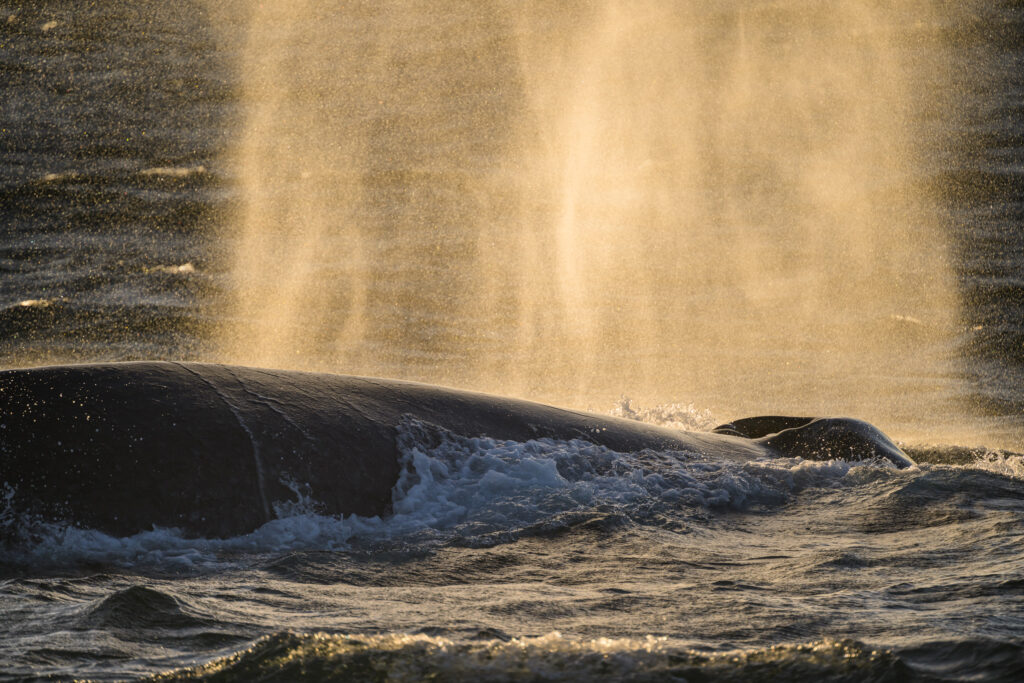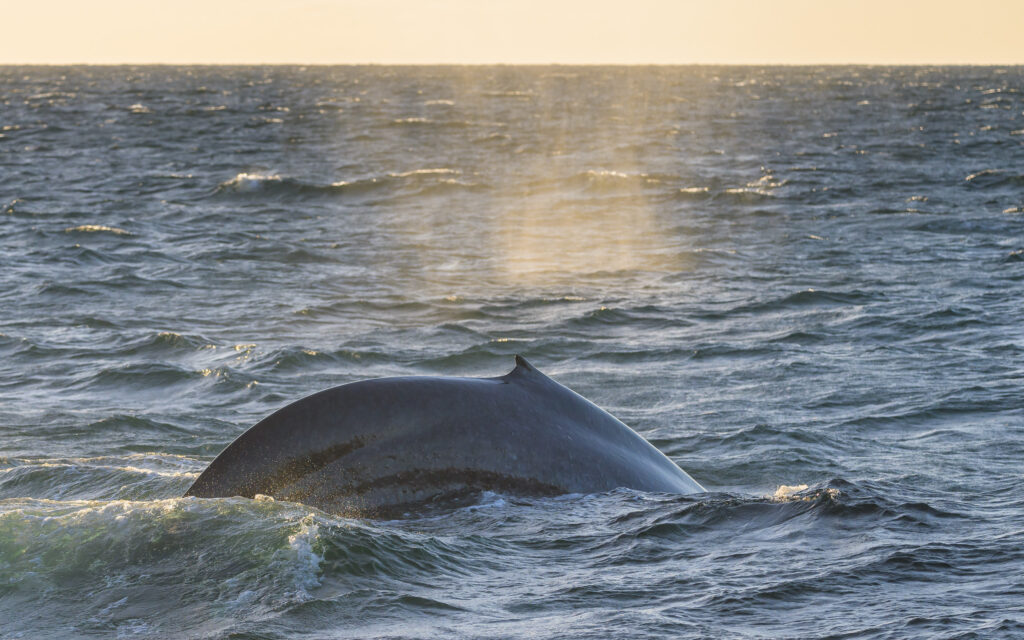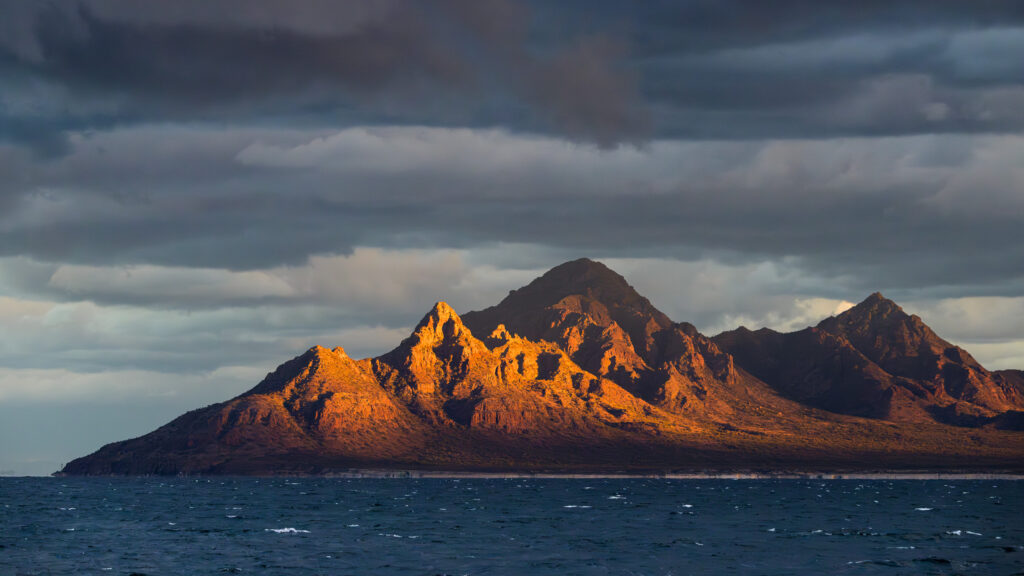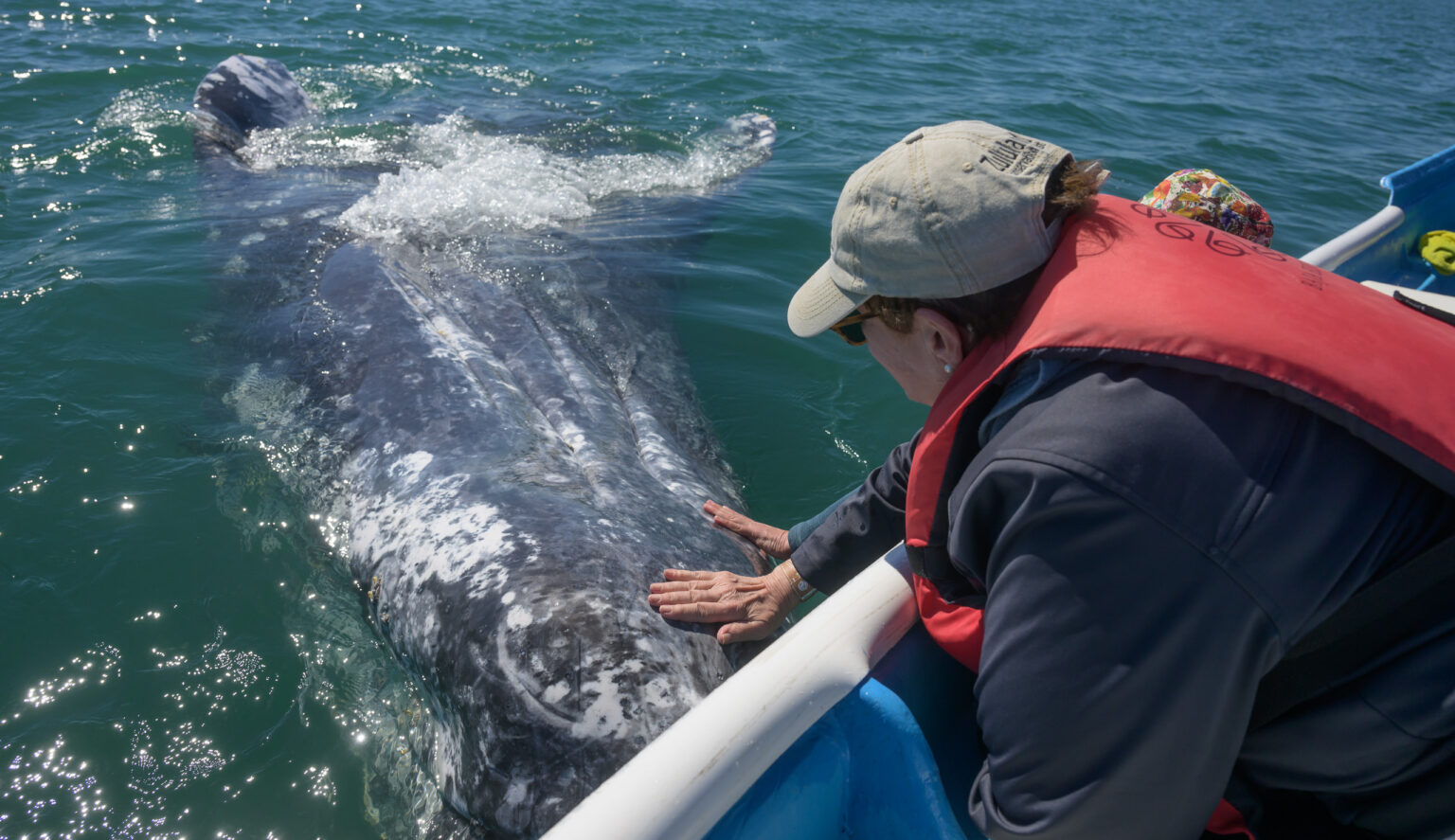
Whale Tales: Our surprisingly friendly encounters with gray whales
By Kevin Lisota |
I have been a pet owner for a long time, and I’m accustomed to dogs or cats approaching and wanting a nuzzle and a scratch. Imagine my surprise when a 40-foot/30-ton free-ranging gray whale approached our small boat, rolled on its back, looking for a scratch and a rub!
In Alaska, I’ve been with hundreds of gray whales feeding, and I was familiar with their mottled, slate-gray appearance. However, their behavior was quite different. They were busy feeding, and their interactions were limited to occasionally popping their heads out of the water. In their winter sanctuary in Mexico’s Baja California, the whales aren’t feeding. Many are busy nursing their calves, and others are preoccupied with mating. However, some of these cetaceans are friendly and curious, seeking interaction with humans in small whale-watching boats.
It didn’t take long for our first whale interaction. As our small boat drifted, a whale approached and poked its snout out of the water behind the outboard motor. Our guide splashed the water, and we excitedly called for the whale to come over, which it did! It surfaced alongside the boat and hovered quietly, enjoying the petting and scratching from its new human friends.

This happened repeatedly, with different whales approaching the boat. Since their eyes point downward, they would often roll on their backs or on their side to get a better look at us with their softball-sized eyeball in one of the strangest staring encounters in the animal world.
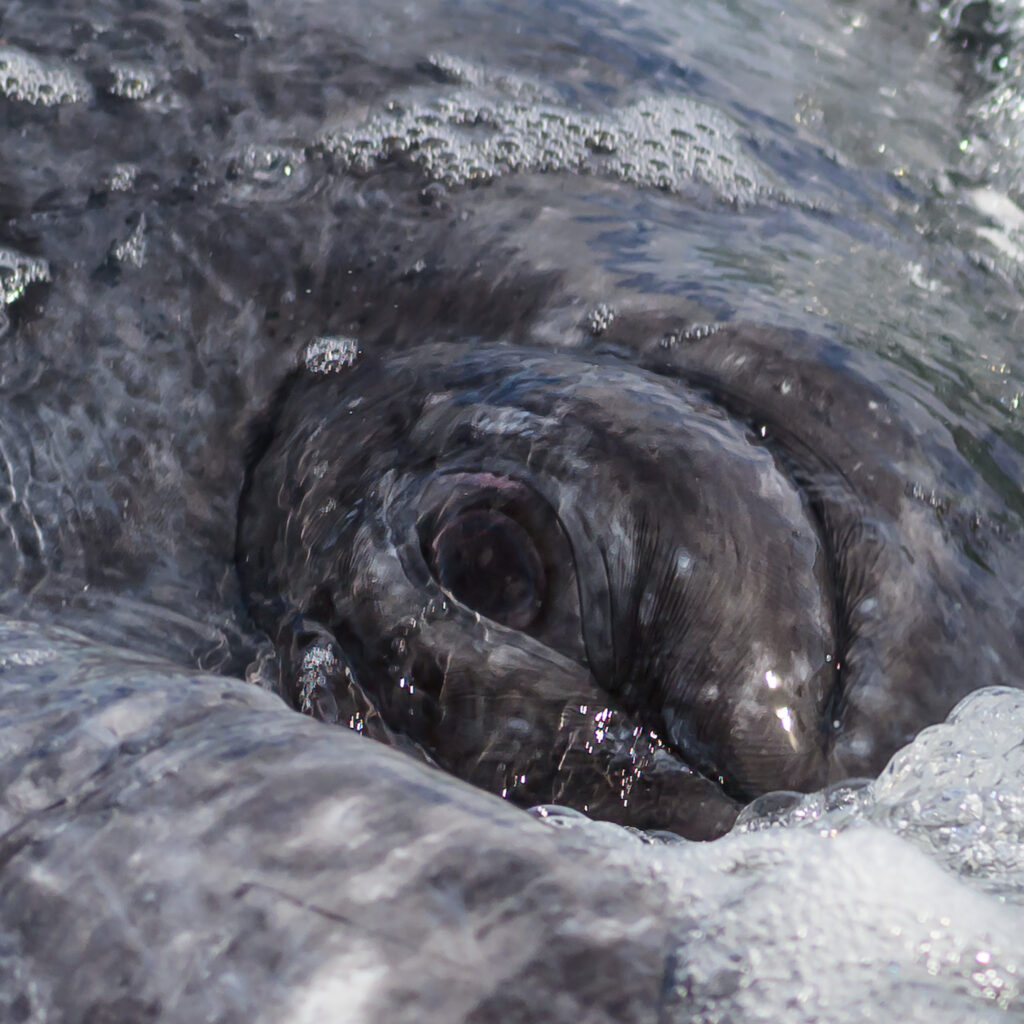
Our guides told us the current count of whales in the lagoon was over 140. Sometimes, we were surrounded by whales. Some approached to interact, others swam close, and some spy-hopped to see us better. We also saw mothers with new calves and some frisky mating in the lagoon.


Petting a whale didn’t feel anything like I imagined. What I thought would be tough, leathery skin turned out to be smooth and slightly spongey. It felt like an unpeeled, hard-boiled egg or naugahyde.
On trips like this, I always advise fellow photographers to bring dry bags to protect their equipment when small boats are involved. It’s a precaution against splashes from waves. On this trip, my warning missed the most obvious reason you might get wet: being splashed or doused by whales! On our first excursion, I caught a whale tail right behind the boat out of the corner of my eye. The tail was out of the water in a blink, drenching me. Not to be outdone, its companions gave us a good dousing with salty spray from their blowhole.
The science behind why these whales are so curious and seek our attention is unclear, but many possible factors exist.
In Baja’s San Ignacio Lagoon, the whales are in a nonthreatening environment. Orcas aren’t hunting them, and human boat activity is tightly controlled, with most of the lagoon free of boats. In the whale-watching area, these small boats don’t chase. They drift while waiting for whales to approach. Sound is essential to whale communications, and they may be curious about the buzzing sound of boat motors, the splashes at the surface, or the commotion of the humans.
As calves, whales spend much time nudging and nuzzling with their mothers. Like many mammals, they are curious and explore their surroundings. Perhaps nudging against a boat full of humans isn’t too different. Or maybe they hope for a scratch to remove some annoying barnacles and whale lice on their sensitive skin. What was undeniable was their curiosity about us, and perhaps a good rub or scratch while staring at us makes repeating those visits worthwhile. No one knows for sure, as we’re not gray whales.

What is most unusual about gray whales’ friendly nature is their transformation from whaling days. When they were hunted in the past, gray whales would aggressively defend themselves and their calves, often attacking and damaging boats, earning them the name “devilfish.” After whaling ended, the current generation of whales has forgotten their fear of humans and boats and became the friendliest whales, actively seeking human attention.
I have photographed whales in many corners of the earth. Humpback whales still win the prize for above-water showmanship, but nothing compares to the experience of a gray whale approaching us, staring intently at us, and seeking our affection.
Our journey to Baja California wasn’t only for the gray whales. We also spent time aboard an expedition ship with blue whales, nature’s most enormous creature, and snorkeling with a mischievous sea lion colony and immense whale sharks.
I’ll be returning to the Baja Peninsula next year to repeat this adventure, and I would love for others to share in this moving experience. While it is a photography-focused trip, you don’t have to be a photographer to enjoy the experience with the whales. If you love being on the water and you love whales, you’ll have a great time. You can learn more about our Baja Whales trip here.
